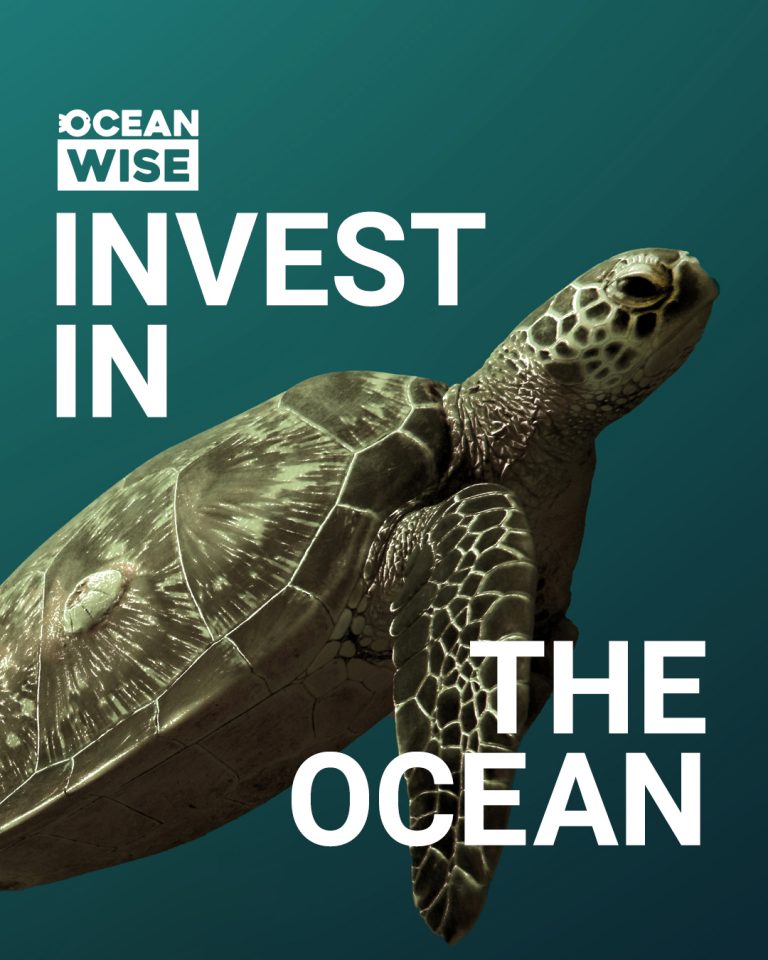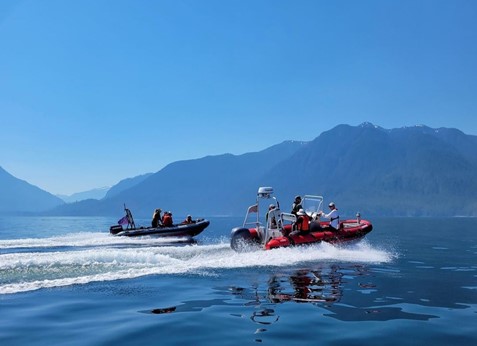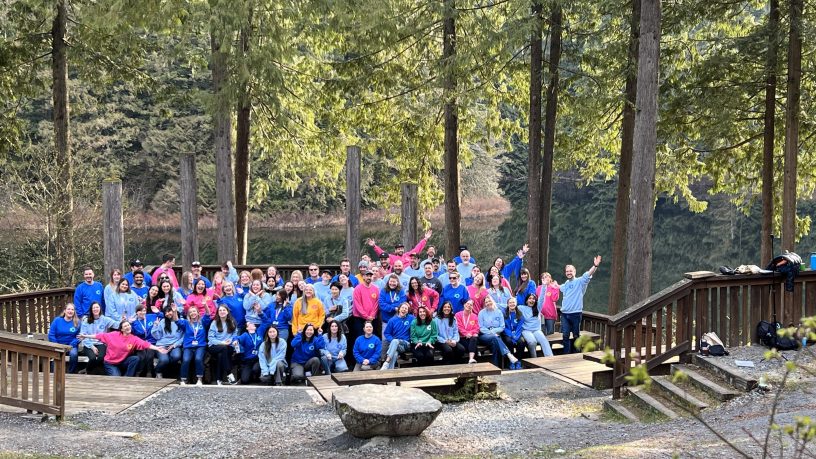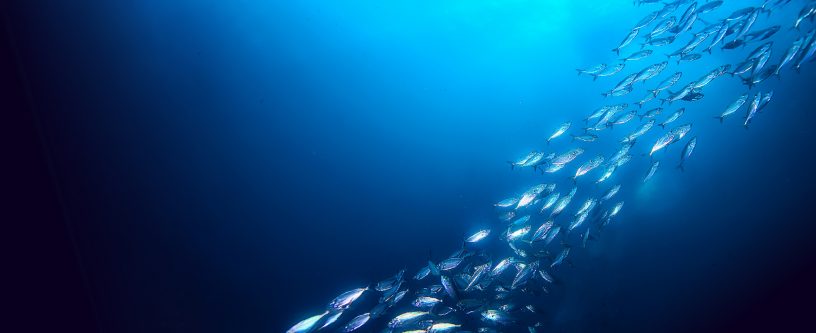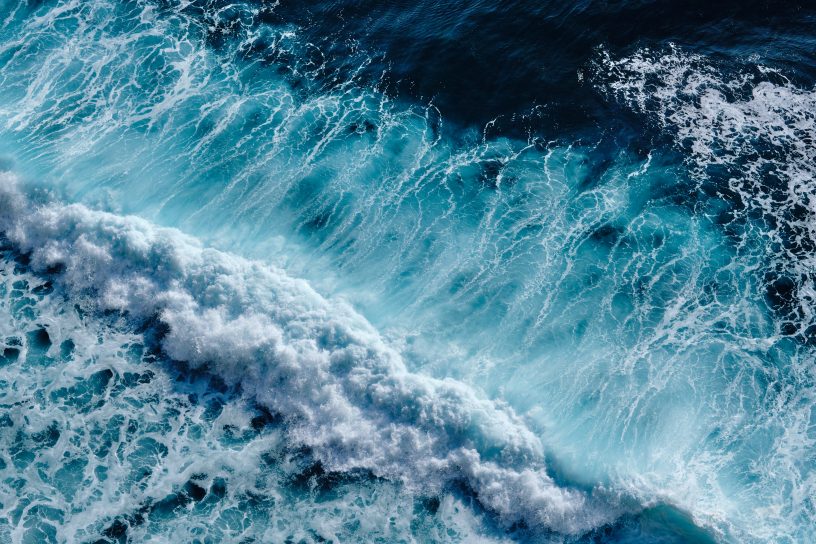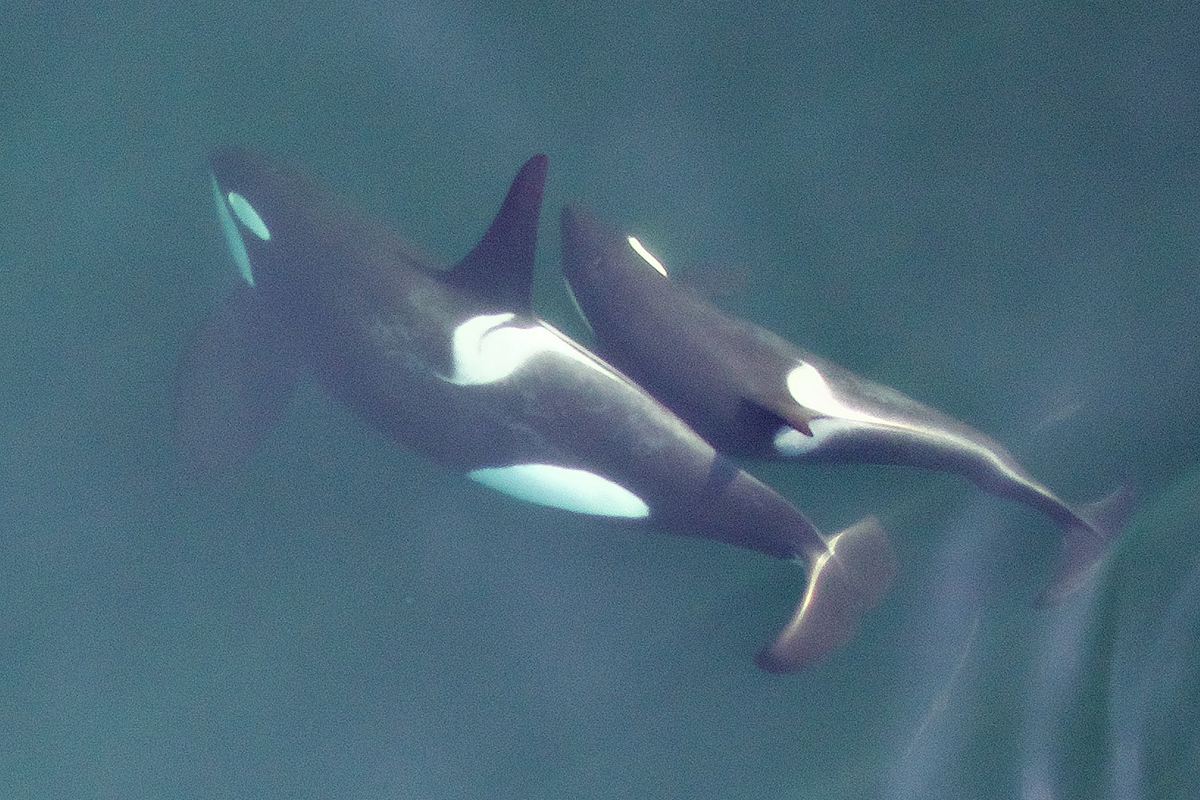
Saving Southern Resident Killer Whales
By Dr. Lance Barrett-Lennard
For some coastal First Nations in British Columbia, the killer whale is considered the guardian of the sea, but for killer whales on B.C.’s south coast, it’s time for humankind to step into the role of guardian, and do more to protect them.
Today, the David Suzuki Foundation, Georgia Strait Alliance, Natural Resources Defense Council, Raincoast Conservation Foundation and World Wildlife Fund Canada have filed a Petition for an Emergency Order under the Species at Risk Act for Southern Resident Killer Whales. The Order outlines immediately actionable measures to address threats to this fragile population.
I have discussed these threats with scientific colleagues many times in recent months. Throughout 28 seasons of field research I have studied the ecology and behavioural and population biology of killer whales in British Columbia and Alaska. My current field research uses drone-based aerial photogrammetry to precisely measure the body condition of each member of the Southern Residents. Comparison of these measurements within and between seasons enables my collaborators and me to detect pregnancies, estimate growth rates, and compare variation in body condition with variation in prey abundance.
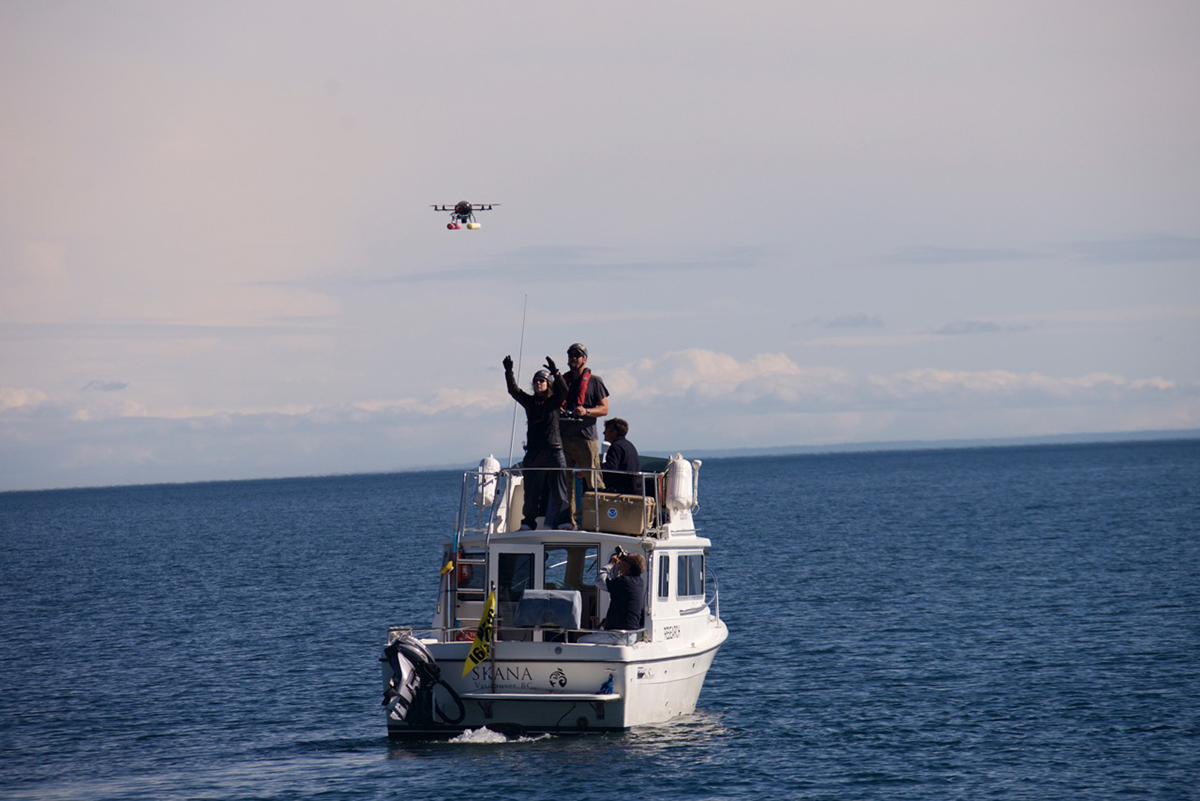
This population of whales is critically endangered. When last seen in the late summer and fall of 2017, the Southern Residents numbered only 76 individuals, their lowest level in more than three decades.
Following a recent “baby boom” of nine calves live born beginning in December 2014 and ending in 2016, the Southern Residents have suffered a series of setbacks. Three of those calves have since died, as well as 11 other population members in the same period, including four critically-important reproductive-aged females. Another concerning observation is that one of the three southern resident pods has not produced any surviving calves since 2011.
Chinook salmon is the preferred prey species for resident killer whales. Most researchers agree that reduced prey availability in their summer foraging areas, and anthropogenic noise and vessel disturbance that reduces foraging efficiency, are the most significant causal factors in recent declines of the population and present the greatest obstacles to the population’s recovery.
Efforts to rebuild and restore diverse Chinooks stocks have been underway for many years. Although these efforts have been primarily intended to support fisheries and conserve threatened Chinook stocks, maintaining and accelerating them provides the best hope for the recovery and survival of Southern Resident Killer Whales. Unfortunately, these measures can take years to produce positive results. In the meantime, the small size of the Southern Resident population, its declining trend, increases in its mortality rates and declines in its reproductive rates indicate an urgent precautionary need to increase its access to salmon in the short term.
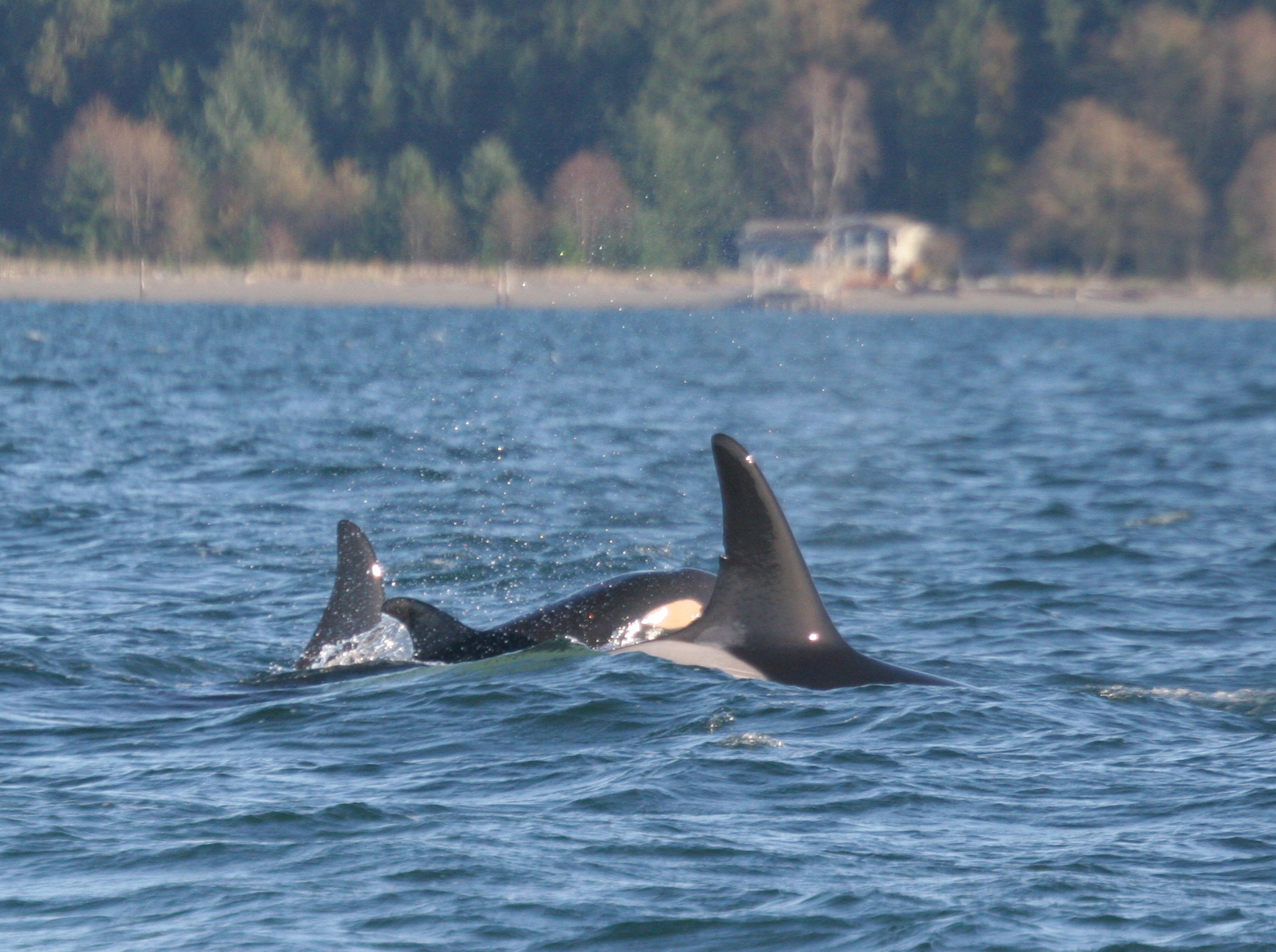
When foraging actively, Southern Residents usually spread out individually or in small groups, swim relatively slowly and echolocate actively. When they detect Chinook salmon they dive and a chase ensues. This chase is often highly energetic and may last for several minutes. Often the salmon is chased to the surface and pursued rapidly just underneath it. If the whale has to alter course during a chase to avoid a boat, the salmon may escape. Such escapes can be difficult to detect by a boat-based observer, but are apparent when viewed from above, as with a drone. Many studies have demonstrated that anthropogenic noise such as that generated by power vessel has a masking effect on echolocation and reduces the range over which prey can be detected. The impact of this masking effect on foraging rates is likely to be most severe when prey are sparse, making long detection ranges especially important. Both factors indicate the importance of boats staying well back from the whales.
Southern Resident Killer Whales tend to use consistent travel routes in the Salish Sea, and expend much of their foraging effort in the same areas. These routes and foraging areas are well-known to commercial whale watch operators and researchers, which means there are several short-term measures available to increase the Southern Resident Killer Whales’ access to salmon.
- Fishing restrictions that increase the number of Chinook returning to the vicinity of the Fraser River. Stocks should be selected based on their projected importance to the whales, taking into account run size, run timing and fish size/quality.
- Fishing and whale-watching should be both be restricted on on key foraging sites used by the Southern Residents.
- Minimum approach distances to Southern Resident killer whales by whale watching boats should be increased to reduce noise, disturbance and interference with foraging.
- The number of boats approaching Southern Resident killer whales at any given time should be reduced, for the same reasons as above. Commercial whale watching vessels should be licensed and their numbers capped.
Implementing and enforcing measures such as these, and adapting them over time, won’t be easy or universally popular, but it provides an opportunity for the Government of Canada to demonstrate its leadership on environmental issues. There’s even more at stake than political gain: a future for an iconic population cherished by millions.
Dr. Lance Barrett-Lennard is director of the Cetacean Research Program at Ocean Wise and an adjunct professor in the Department of Zoology at the University of British Columbia. Dr. Barrett-Lennard co-chaired the Resident Killer Whale Recovery Team that produced the Recovery Strategy for Southern Resident Killer Whales in 2011 and served on the panel that drafted the Resident Killer Whale Recovery Action Plan.
Posted January 30, 2018 by Vancouver Aquarium

